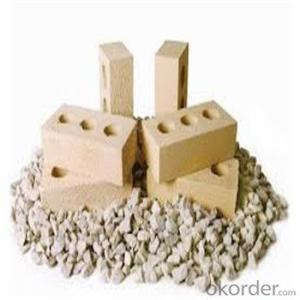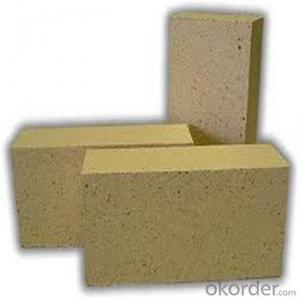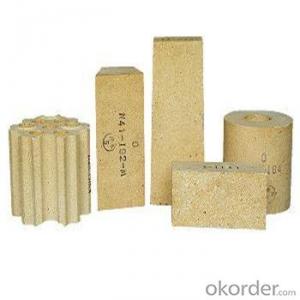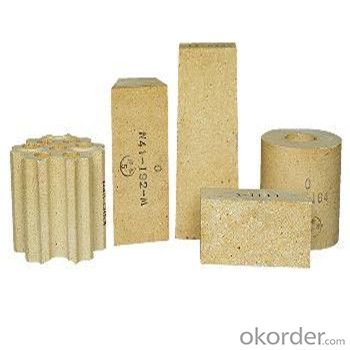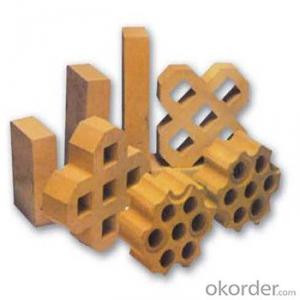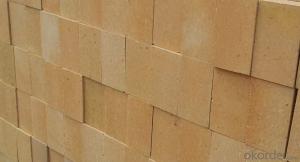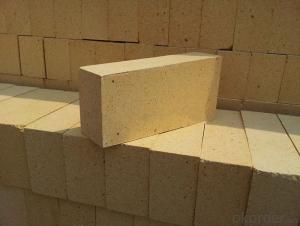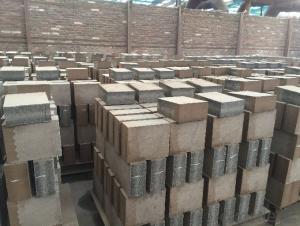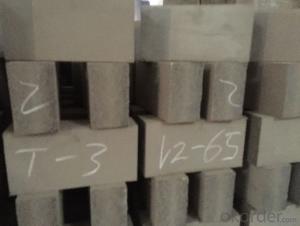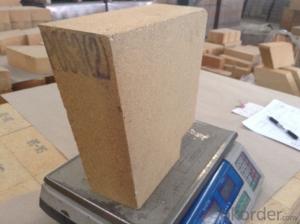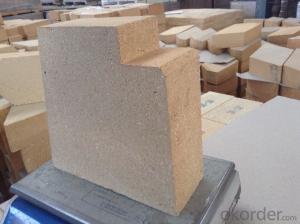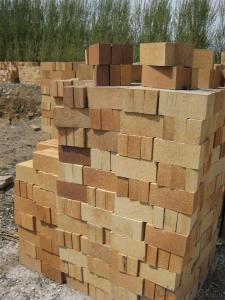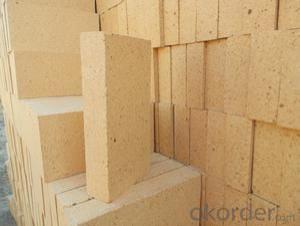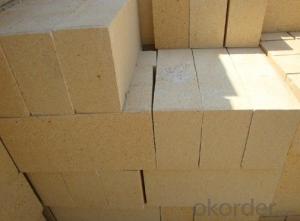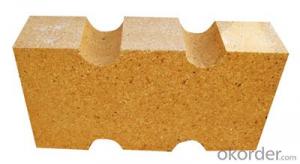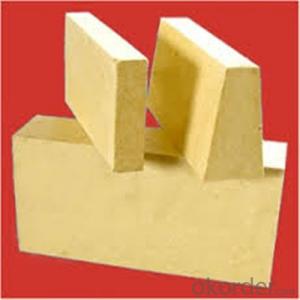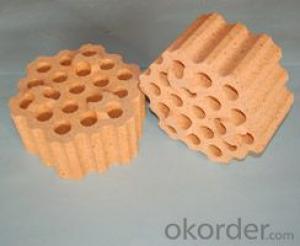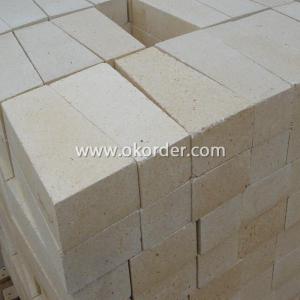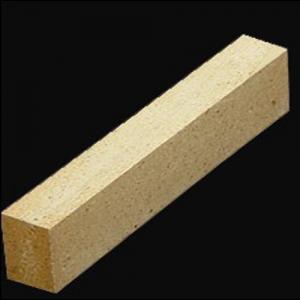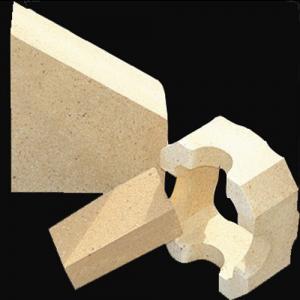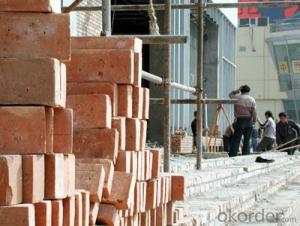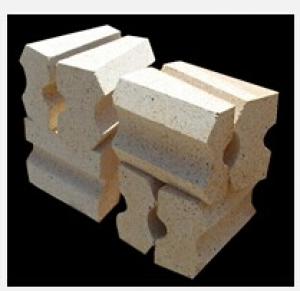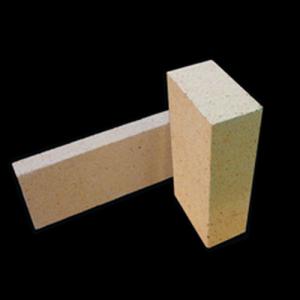Fireclay Brick - Low Creep for Hot Blast Stove
- Loading Port:
- China main port
- Payment Terms:
- TT OR LC
- Min Order Qty:
- 100 kg
- Supply Capability:
- 2000000 kg/month
OKorder Service Pledge
OKorder Financial Service
You Might Also Like
High alumina fireclay Brick
High alumina fireclay Brick for Heating Furnace is a kind of insulation material adopting organic matter as ignition loss substance in order to increase the porosity of refractory, which has such advantages as high porosity, small volume density, good insulation effect, high mechanical intensity, small thermal conductivity and long service life. For various industrial kilns & furnaces, it is a kind of essential refractory for energy saving and temperature preservation.
This series of High Alumina fireclay Brick for Heating Furnace are made of selected high alumina bauxite, kaolin caly, hollow microsphere as the mian material.By shaping at high pressure and sintering at high temperature.
Fireclay brick is shaped refractory product.It is made from flint clay clinker and binder , Through high heat sintering. The Al2O3 content range from 28% to 48%.The refractoriness range from 1580°C to 1750°C(SK-30.SK-32.SK-34.SK-35).
Product Applications:
High alumina fireclay Brick are ideal for use in the below applications
Furnaces of metallurgy industry, heat treatment furnace
Furnaces of chemical industry and construction industry.
Furnace of incineration of garbage, recirculating fluidized bed furnace
Standard sizing: 230 x 114 x 65 mm others up to the client
Product Advantages:
CNBM has success in its Fireclay brick due to their cost-effectiveness and excellent insulating properties. CNBM also has experience in ceramic fiber blankets application and would like to assist you in product selection, system design, and installation techniques.
Main Product Features:
High refractoriness,High-temperature endurable .
Good corrosion resistance.
Good spalling resistance and wear resistance.
Good thermal shock resistance.
High mechanical strength.
High-temperature creep rate is low.
Good volume stability at high temperature.
Product Specifications:
ITEM | UNF42 | UNF46 | ZGN42 | RN40 | TDL45-12 |
Refractoriness, ℃ | 1730 | 1750 | 1750 | 1730 | 1760 |
Bulk Density, g/cm3 | 2.15 | 2.25 | 2.3 | 2.15 | 2.37 |
Apparent Porosity, % | 22 | 20 | 15 | 24 | 12 |
C.C.S, Mpa | 30 | 35 | 58 | 28 | 68 |
Refractories Under Load (0.2Mpa),℃ | 1400 | 1420 | 1450 | 1430 | 1500 |
Reheating Linear Change, % | 1400℃x2h 0.1~-0.4 | 1430℃x2h 0~-0.1 | 1450℃x2h 0~-0.2 | 1350℃x2h 0~-0.3 | 1450℃x2h -0.1~+0.05 |
Al2O3 Content , % | 42 | 46 | 42 | 40 | 45 |
Size :
Common sizes
Straight type | Arch type | Wedge type |
L×W×H (mm) 230×114×65 230×114×75 230×114×32 220×110×60 220×110×50 220×110×40 220×110×30 | L×W×H/h (mm) 230×114×65/55 230×114×65/45 230×114×65/59 220×110×65/50 220×110×75/65 220×110×60/40 | L×W×H/h (mm) 230×114×65/55 230×114×65/45 220×110×75/65 220×110×60/40 |
Other sizes according to customer requirements | ||
FAQ:
Q1: How about your factory’s annual production capacity?
A1:CMAX annual production is about 310,000Tons.
Q2: How many production lines of your factory?
A2:CMAX has 26 production lines, including eight silicon bricks lines, and each one of mullite brick, high alumina brick, insulating brick and monolithics line.
Q3:How large the scale of your factory?
A3: CMAX covers almost 200,000 Square meters, including plant area of 180,000 square meters.
Q4: What’s your factory’s product scope?
A4:CMAX main products are: refractory for hot blast stove, refractory for coke oven, refractory for glass kiln, refractory for carbon calcining furnace, refractory for acid pickling line, refractory for cement kiln, refractory for blast furnace, refractory for nonferrous metal furnace, and basic refractory raw materials.
Product Picture
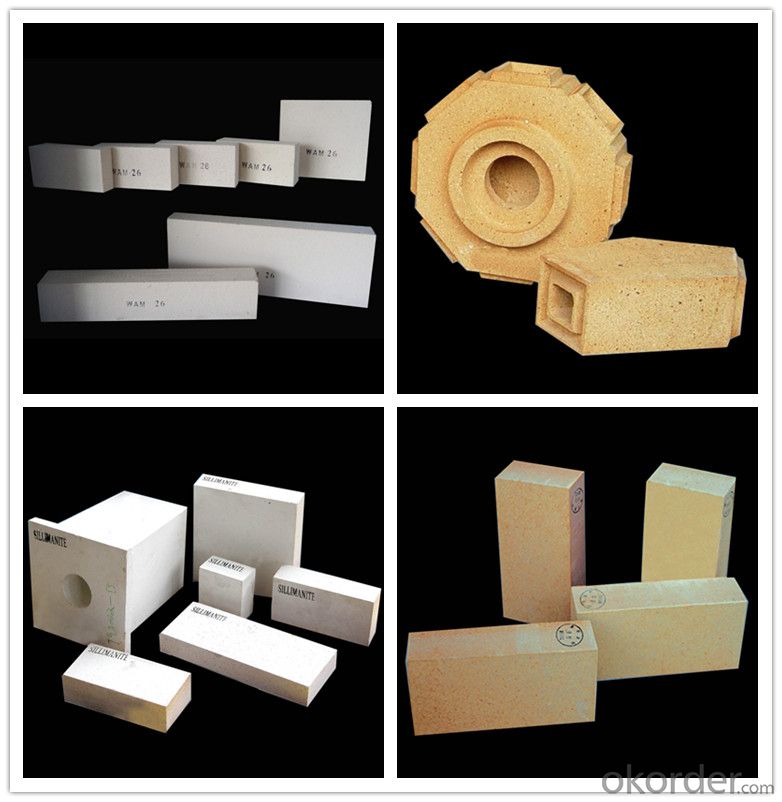
Produce Processing
Crushing
In this stage massive raw materials which have been stored, are ground and classified into proper sizes, making them easier to shape.
Mixing
The prescribed size of ground raw material is weighed and mixed into a designated amount of water and forming agent.
Shaping
The mixture is then poured into a mold to form shapes, and the pressure is high.
Drying
In this stage water is removed from the shaped bricks. This helps preventing the bricks from deforming or cracking which may result due to the rapid evaporation
Firing
This is the most crucial process in refractory manufacturing. The modeled bricks are fired at high temperature to complete their thermochemical reaction so that they do not deform.
Inspection
The bricks' physical and chemical properties are inspected very carefully by rigid quality management procedures.
Packing shipment
We guarantee efficient delivery every time.
Packing
We also supply (Click on following picture if interested):
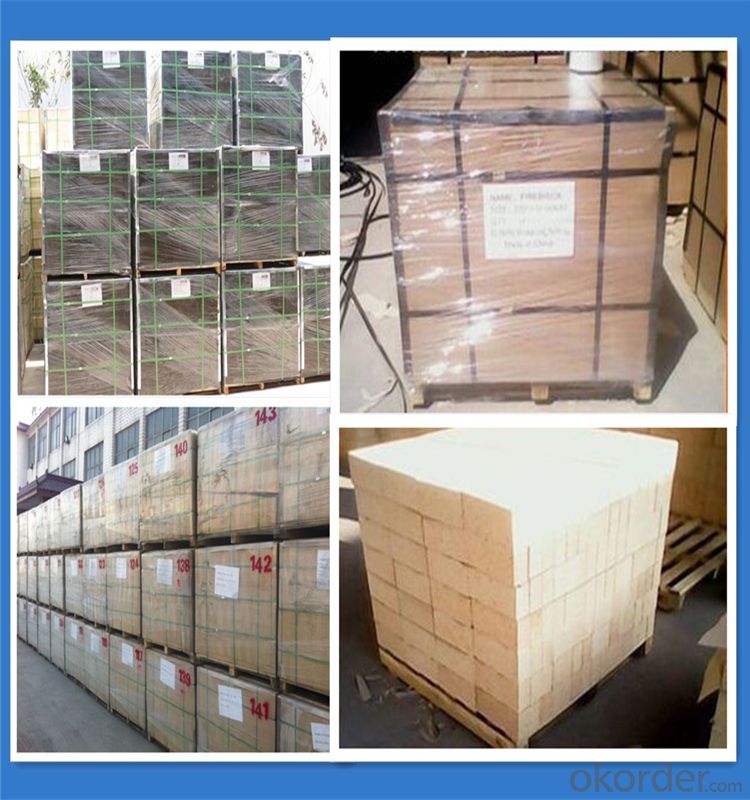
- Q: What is light brick and what are the characteristics of light brick?
- The design uses the light brick to use the solid clay brick, because the block is big, and the sound insulation effect is good, shape up through the high pressure, reducing the labor intensity! Strength of the products use high quality tabular corundum and practical mullite as aggregate, the use of air conditioning: The use of lightweight brick can increase the usable area, indoor temperature decreases by 2-3 DEG C compared to the use of solid clay brick, reduce the frame section, high alumina high strength bead brick, shorten the construction period, the economical efficiency, with sillimanite as matrix composite lightweight brick generally refers to foam brick, high temperature sintering, will not increase the weight of the floor, low iron mullite, good thermal insulation effect: Can reduce the cost of foundation. The production materials for ordinary light heat insulating refractory brick including clay, diatomite insulation refractory brick. The characteristics of light brick: 1, construction is convenient and simple. 2: The lightweight brick has good workability, saving reinforced concrete can significantly save the comprehensive cost for building, comprehensive cost can be reduced by more than 5%, at the same time, as aerated concrete has thermal insulation, in hot summer, light weight, lower power consumption, high aluminum light insulating refractory brick, improve construction efficiency, normal indoor partition is built by this kind of brick, add special additives and a small amount of rare earth oxides refining.
- Q: Whether yellow dextrin is used in refractory bricks?
- use professional mortar, do not use yellow dextrin
- Q: How to choose refractory brick
- The design of size and selection of refractory brick shape mainly depend on the design of industrial furnace lining . The size and shape of refractory bricks must meet the needs of furnace refractory brick masonry, it both ensures the convenience of building and usability of thermal equipment. (such as sealing, insulation, brick grade and service life etc.). When the furnace design company designs furnace lining of refractory bricks, first it should design the size of refractory bricks or choose standard size refractory bricks, sometimes this work is done by a furnace company, sometimes it is done by furnace construction?company or furnace maintenance company directly. The refractory bricks that has a certain size designed by the furnace design companies or construction companies, in addition that it should satisfy furnace operation and operation life, it also considers whether it is convenient for refractory factories to produce refractory bricks, besides, it should take into account that whether the pass rate on main production process and finished product rate is high when bricks are moulded, installed and fired. Refractory it is convenient to operate, and is convenient for refractory factory producing, the selection of shape of refractory bricks and the design of and the brick molding, and on this basis, found the relationship between the size of wedge brick, brick level and service life etc.), some even combine refractories with furnace, but each has its inherent regularity. The foreign refractory attaches great importance to building furnace, the height of furnace should be integer times of the thickness of brick (including brickwork joint)
- Q: Does circulating fluidized bed boiler's furnace wall use refractory to have thermal insulation?
- Heat insulation cotton is laid behind refractory brick.
- Q: What is the refractory brick in silicious model?
- Adding appropriate amount of mineralized agent to promote the transformation of quartz in the body into phosphorus quartz. Smaller coefficient of thermal expansion. Also used in high temperature bearing part of hot blast stove and acid open hearth furnace, refractory materials and ceramic kiln, kiln vault and other load-bearing parts, thermal shock resistance variation. High temperature strength. the glass furnace is burnt in 1430 to 1350 degrees Celsius in the reducing atmosphere. use natural silica as raw materials. True density 2. more than 93% of silica content. generally there is no crystal type transformation above 600 degrees celsius. With acid slag erosion and sediment chamber regenerator performance, soaking furnace, open hearth furnace. there is more crystal type transformation below 600 degrees celsius. mainly used in coking chamer of coke oven and partition of firebox. acid refractory material made of high thermal shock resistance, large volume change, square quartz and a small amount of residual quartz and glass box . Long term use at high temperature without deformation
- Q: What is the meaning of the new type of dry rotary kiln refractory brick 620,320?
- It should be the length of the turn. I'm not sure if it is right.
- Q: What matters should be noticed when using clay refractory bricks in a glass kiln?
- There are a variety of products for the production of shaped and unshaped refractory clay, such as blast furnace insulation and high alumina bricks. Brick products include refractory clay bricks, plastic materials for overload, refractory clay and high alumina casting materials, etc.. In the amorphous part, if to support the horizontal induction furnace and the straight induction furnace lining, such as refractory clay and high alumina plastic
- Q: What are the sizes and sizes of clay bricks?
- At present, with the minimum size of the maximum size of the market, for the maximum size of the clay brick, there are 600*250*200mm, 180*115*90mm, 300*300*55mm, and the minimum sizes 150*150*150mm, 235*115*55mm and so on, the construction industry the most basic materials for clay brick, must use in daily life is very broad.
- Q: What material are used to burn firebrick?
- Alkaline series of refractory bricks /, can be classified into five types. Refractory bricks are generally made from refractory clay (white clay) or other refractory materials. Refractory brick according to the composition of refractory material, that is, silicon aluminum refractory brick / carbon containing refractory brick / thermal insulation refractory brick/ zirconium containing refractory brick /
- Q: How many bricks, mortar and how much wear and tear does one side of the clay brick masonry need?
- In the standard brick wall of 1M3, the standard brick occupies 516.53 pieces of *0.24M*0.12M*.053M=0.788M3
Send your message to us
Fireclay Brick - Low Creep for Hot Blast Stove
- Loading Port:
- China main port
- Payment Terms:
- TT OR LC
- Min Order Qty:
- 100 kg
- Supply Capability:
- 2000000 kg/month
OKorder Service Pledge
OKorder Financial Service
Similar products
Hot products
Hot Searches
Related keywords
